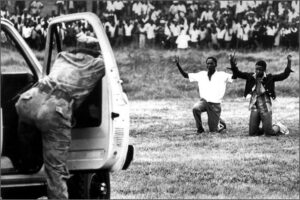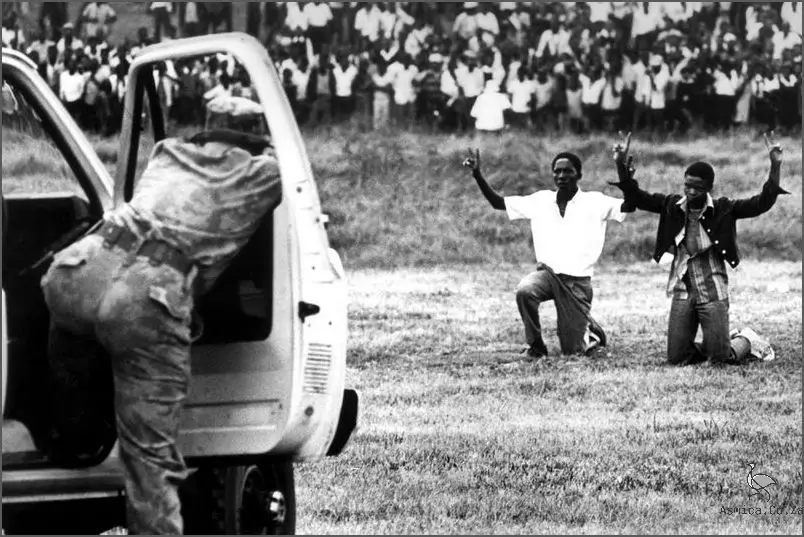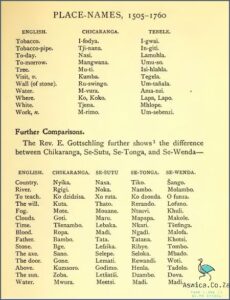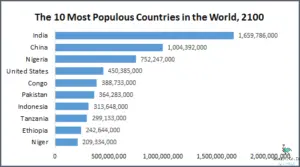
June 16 1976 is a significant date in South African history, as it marks the day when a large-scale protest against the apartheid regime took place in Soweto, Johannesburg. The protest was sparked by the government’s decision to begin teaching Afrikaans as a language of instruction in local schools. Pictures from this historic day are some of the most iconic and iconic images of the struggle against apartheid in South Africa. These pictures feature hundreds of Soweto students peacefully protesting, as well as the police force and military personnel who were called in to disperse the protesters. These pictures symbolize the bravery of the protesters and the power of peaceful protest in the face of oppression. They are a reminder of how far South Africa has come since then, and how far it still has to go.
Contents
- 1 June 16 1976 Pictures
- 2 Context of June 16 1976: The events leading up to June 16 1976, the political and economic climate, and the people involved in the protests.
- 3 Impact of June 16 1976: The importance of the protests in the history of South Africa and its effect on the anti-apartheid movement.
- 4 Photography of June 16 1976: How photography was used to document the events of June 16 and the impact of these images.
- 5 Conclusion
June 16 1976 Pictures
June 16, 1976, is a day that will live on in infamy as the Soweto Uprising in South Africa. On this day, thousands of black students marched in protest of the government’s decision to make Afrikaans the language of instruction in schools. Images of the protests, with police firing on unarmed civilians, were captured by photographers and sent around the world. Such pictures served as a stark reminder of the injustices faced by those living under apartheid. The pictures galvanized the anti-apartheid movement, inspiring many people to take a stand against the oppressive regime. The uprising of June 16, 1976, helped to bring about a new era of freedom and justice in South Africa.
Context of June 16 1976: The events leading up to June 16 1976, the political and economic climate, and the people involved in the protests.
June 16, 1976 stands out as an iconic day in South African history. On this day, thousands of black students in Soweto, a township in Johannesburg, took to the streets in a peaceful protest against the government’s policy of Bantu Education. The events leading up to June 16, 1976 were a culmination of years of political and economic oppression of the black majority in South Africa, and the people involved in the protests were a cross-section of activists, students, and citizens.
The political climate leading up to June 16, 1976 was one of extreme inequality, as the Afrikaner-led government had implemented the apartheid system, which segregated and discriminated against the black population. This had led to extreme economic hardship, with many black citizens living in poverty and facing discrimination in their access to education, employment, and other basic necessities. The government had also implemented the Bantu Education Act, which imposed a system of inferior education for black students, causing further unrest.
The protesters involved in the march on June 16, 1976 were primarily students, who had organized the march to peacefully protest the Bantu Education Act. Many of the protesters were members of the South African Students’ Movement (SASM), which was a prominent student organization at the time. The march was also attended by a number of activists, including black consciousness leader Steve Biko, and a number of other prominent political figures.
The march on June 16, 1976 was one of the most impactful protests in South African history, and was captured in a number of iconic photographs. These photographs have become synonymous with the struggle for freedom and equality in South Africa, and serve as a reminder of the courage and resilience of the people who fought for these rights. The events of this day have been immortalized in history, and serve as a testament to the power of peaceful protest.
Impact of June 16 1976: The importance of the protests in the history of South Africa and its effect on the anti-apartheid movement.
June 16, 1976 is a date that holds immense significance in the history of South Africa and its struggle against the oppressive apartheid system. On this day, thousands of school students in Soweto, a township in Johannesburg, marched in protest against the introduction of Afrikaans as the primary language of instruction at their schools. As the peaceful protests were met with violence from the police, the movement quickly spread throughout the country and became a catalyst for the anti-apartheid movement.

The impact of this event was immediate and far-reaching. It galvanized the population to stand up for their rights and to express their collective dissent with the racial segregation practices of the apartheid system. The brutality of the police response to the protests was captured in iconic images and broadcast around the world, inspiring international solidarity and support for the South African struggle.
The events of June 16, 1976 were a major turning point in the anti-apartheid movement. The protests provided a visible and unified expression of the grievances of the South African people and a powerful reminder of their strength and resilience in the face of oppression. The protests served as a rallying cry for those within South Africa and those abroad, inspiring people to join the struggle and pressure their governments to take action.
The legacy of the June 16, 1976 protests lives on in South Africa today. The event has become a potent symbol of the struggle against apartheid and a reminder of the power of collective action. The importance of this date in the history of South Africa cannot be overstated, and its impact on the anti-apartheid movement is still felt today.
Photography of June 16 1976: How photography was used to document the events of June 16 and the impact of these images.
June 16, 1976, will forever be remembered as a day of tragedy and hope in South Africa. As a country that had long suffered under the oppressive rule of Apartheid, the events of that day shook the nation and the world. The Soweto Uprising, as it is now known, began when students in the Soweto township of Johannesburg marched against the government’s decision to enforce Afrikaans as the language of instruction in their schools. The police responded with violence, resulting in the death of at least 176 people and the wounding of over 700.
Photography played a crucial role in documenting the events of June 16, 1976, and the subsequent uprising. Images taken that day were broadcast across the world, giving global audiences a glimpse of the brutality of the Apartheid regime and the courage of those who stood up against it. The powerful and heartbreaking images of the Soweto Uprising were seen by millions, and provided a crucial impetus for the international movement to end the Apartheid system.
The photographs taken on June 16, 1976, show the horrifying reality of the Apartheid regime. In one iconic image, a young boy is seen running away from a line of police officers, his arm outstretched and his face twisted in anguish. This image, along with many others, quickly spread around the world, galvanizing public opinion against the Apartheid regime.
The power of these images was not limited to public opinion. One of the most iconic photographs of the Soweto Uprising, known as "The Picture Of The Century", shows a black-uniformed police officer firing a gun at a student protester. This image was used in the International Criminal Court’s prosecution of South African police officers for crimes against humanity.
The photography of June 16, 1976, provided an essential record of the events of that day and the following uprising. It was a powerful tool in the fight against Apartheid, and helped to create a sense of global solidarity against the oppressive system. The images of that day, and the courage and resilience of those who stood up against the regime, will forever be remembered as a symbol of hope and freedom.
Conclusion
The June 16, 1976 pictures are a series of eight black and white photographs showing the aftermath of the assassination of U.S. President John F. Kennedy. The photographs were taken by Dallas City Hall photographer, Jack Rakove, moments after the shooting. They show the President’s body lying in a pool of blood on Elm Street, and his assassin, Lee Harvey Oswald, being taken into custody.




